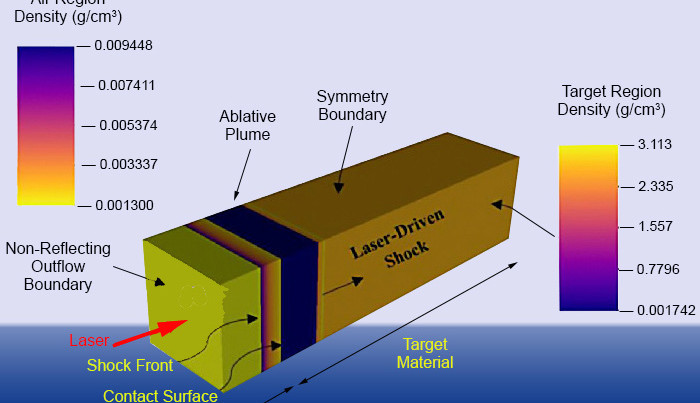Picosecond Pulse Laser Offers Advantages
April 22, 2019
on
on

Shorter pulses of UV laser light are better at shaving off fine layers of material (ablation) and get the job done more quickly using less energy than conventional methods.
Researchers at the Lawrence Livermore National Laboratory studying the efficacy of UV laser pulses for ablation applications discovered that ultra-short pulses in the picosecond range achieve optimal results compared with the more conventional femtosecond pulsed laser technique. Their findings show that picosecond pulses of UV at fluences (pulsed laser interactions) above 10 joules per square centimeter (J/cm²) can remove more material while using less energy than longer-wavelength pulses.
Laser ablation is used to produce very fine and precise structures on work pieces. Micrometer-thick layers of the material surface are removed on each pass of the beam. The pulses are so short they do not produce appreciable temperature rise in the material body so there is no material damage or deformation. The method is also suitable for removing surface contaminants on stone structures and artworks allowing deposits to be removed very gently and precisely.
Researchers at the Lawrence Livermore National Laboratory studying the efficacy of UV laser pulses for ablation applications discovered that ultra-short pulses in the picosecond range achieve optimal results compared with the more conventional femtosecond pulsed laser technique. Their findings show that picosecond pulses of UV at fluences (pulsed laser interactions) above 10 joules per square centimeter (J/cm²) can remove more material while using less energy than longer-wavelength pulses.
Molten material ejection
In ablation applications extremely short pulses heat the surface of the material so quickly and intensively that a thin surface layer liquefies. This precipitates a shock wave and the molten layer undergoes tension during a process known as relaxation which ejects the material through cavitation. This shock-heating and cavitation ejection — requires less energy than material vaporization to remove material. Computer simulations together with practical experimentation demonstrated the effects of picosecond laser pulse ablation of aluminum, stainless steel and silicon.Laser ablation is used to produce very fine and precise structures on work pieces. Micrometer-thick layers of the material surface are removed on each pass of the beam. The pulses are so short they do not produce appreciable temperature rise in the material body so there is no material damage or deformation. The method is also suitable for removing surface contaminants on stone structures and artworks allowing deposits to be removed very gently and precisely.
Lower costs
So far, femtosecond lasers have been used for laser ablation. The pulses used here are three orders of magnitude shorter and the results suggest that they will offer many advantages in terms of cost, efficiency and damage control.Read full article
Hide full article



Discussion (1 comment)
PPihkala 5 years ago
So far, femtosecond lasers have been used for laser ablation. The pulses used here are three orders of magnitude shorter and the results suggest that they will offer many advantages in terms of cost, efficiency and damage control."
I had to read the original longer article to understand what went wrong when you shortened the news here. Just read the quoted text keeping in mind that picosecond pulse is much longer than the femtosecond pulse. You also do not mention the IR pulses used for comparison.
The way I understood the original article is that they compared UV pulses to IR pulses and one or more long pulses of low power UV was more energy efficient than very short IR pulses normally used for material removal. That is because it operates in different way, not vaporising, but liquefying and then blasting that liquid away.